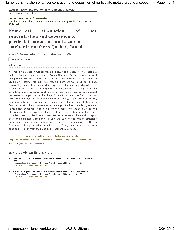摘要
A three-dimensional numerical modelling study of the dispersion of particles emitted from a copper smelter at Rouyn-Noranda, Quebec, was conducted using the BLFMAPS, a mesoscale boundary layer forecast and air pollution prediction system. This numerical modelling system was used to simulate meteorology and air concentration, dry deposition and wet deposition of particulate matter emitted during February and July 2000. During these time periods an instrumented research aircraft measured the chemical and physical properties of the particles in the plume. Simulations were done for particulates with three aerodynamic particle diameters of fine (0.25 mu m), medium (4 mu m), and large (20 mu m). The comparison of model-predicted air concentration for a few metals with the aircraft-measured data provided reasonable agreement. Particle-size-dependent deposition showed some interesting patterns and phenomena. Coarser particles have a stronger deposition rate than finer particles. Finer particles have a longer lifetime in the atmosphere and transport over long distances. Specifically, c. 95% and 85% of fine particle emissions during winter and summer study periods, respectively, were exported > 100 km from the smelter plant, whereas only c. 50% of large particle emissions were exported > 100 km from the plant during both study periods.
- 出版日期2006-6
